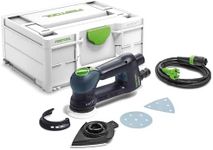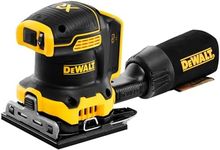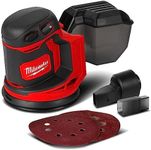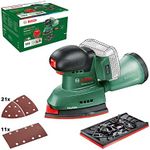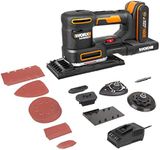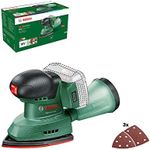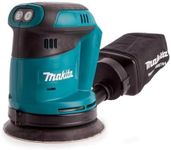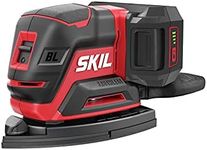Buying Guide for the Best Detail Sanders
When choosing a detail sander, it's important to consider the specific tasks you plan to undertake. Detail sanders are designed for precision work, making them ideal for sanding corners, edges, and intricate surfaces. Understanding the key specifications will help you select a sander that meets your needs and ensures efficient and effective results.Power SourceDetail sanders can be powered by electricity or batteries. Electric sanders are typically more powerful and suitable for continuous use, while battery-powered models offer greater portability and convenience, especially for outdoor or remote work. If you need a sander for long sessions or heavy-duty tasks, an electric model might be preferable. For occasional use or projects where mobility is key, a battery-powered sander could be more suitable.
Motor PowerMotor power, measured in watts or amps, determines the sander's ability to handle tough materials and the speed at which it can sand. Higher power means more efficient sanding, especially on harder surfaces. For light, detailed work on soft woods or small projects, a lower power sander will suffice. For larger projects or harder materials, consider a sander with higher motor power.
Speed SettingsSpeed settings refer to the number of oscillations per minute the sander can perform. Variable speed settings allow you to adjust the sander's performance based on the material and the level of detail required. For delicate surfaces or intricate work, lower speeds are ideal to prevent damage. Higher speeds are better for removing material quickly on larger surfaces. Choose a sander with adjustable speed settings if you plan to work on a variety of projects.
Pad Size and ShapeThe pad size and shape of a detail sander affect its ability to reach tight spaces and corners. Smaller pads are better for precision work and accessing narrow areas, while larger pads cover more surface area and are suitable for broader tasks. Consider the types of projects you will be working on; if you need to sand small, detailed areas, opt for a sander with a smaller pad. For larger surfaces, a bigger pad will be more efficient.
Dust CollectionDust collection systems help keep your workspace clean and reduce airborne particles, which is important for health and safety. Some sanders come with built-in dust bags or can be connected to external vacuum systems. If you are working indoors or on projects that generate a lot of dust, a sander with an effective dust collection system is essential. For occasional use or outdoor projects, this feature might be less critical.
Weight and ErgonomicsThe weight and ergonomics of a detail sander affect comfort and ease of use, especially during extended periods of work. Lightweight sanders are easier to maneuver and less tiring to use, while ergonomic designs can reduce strain on your hands and wrists. If you plan to use the sander for long sessions or detailed work, prioritize models that offer comfortable grips and are easy to handle.
